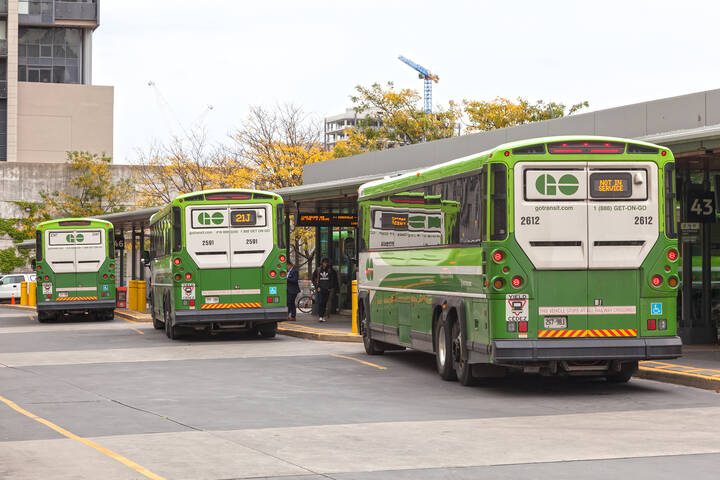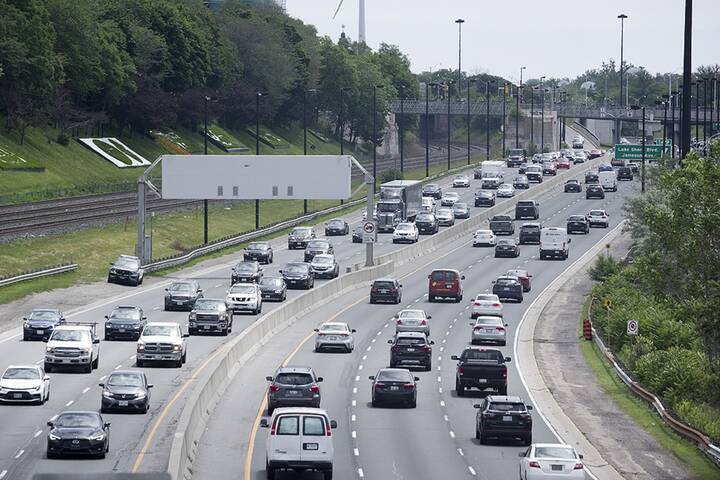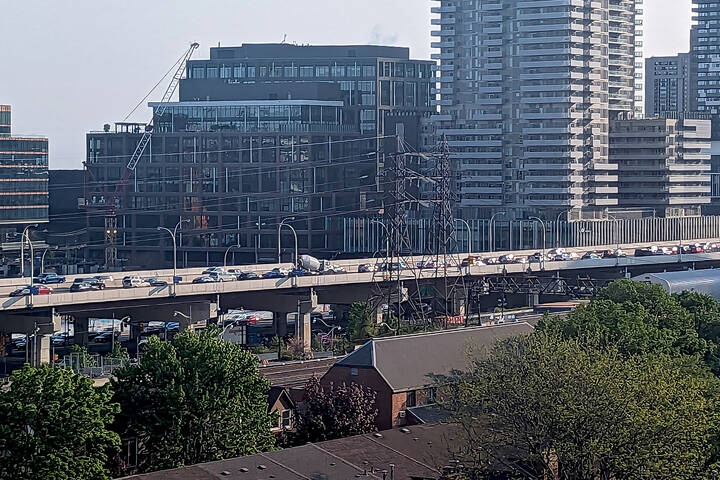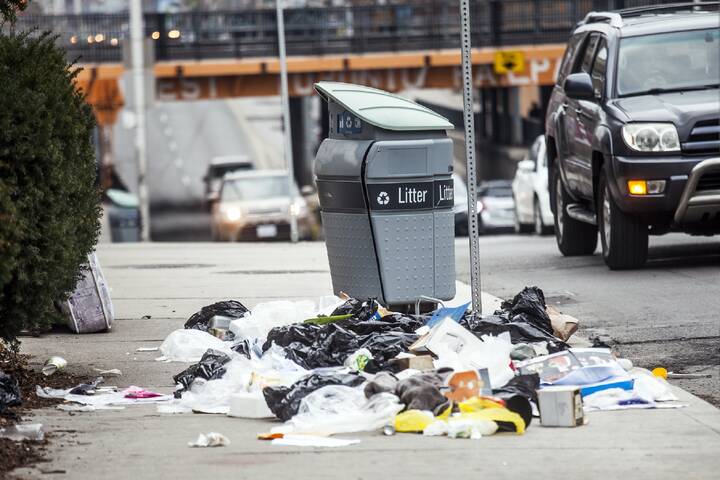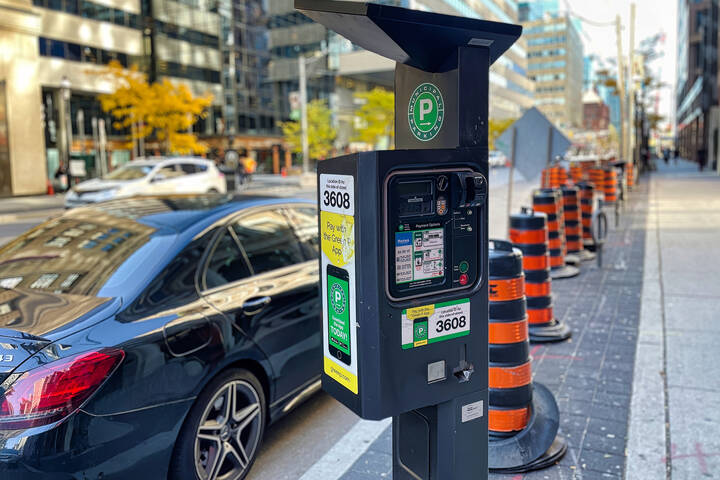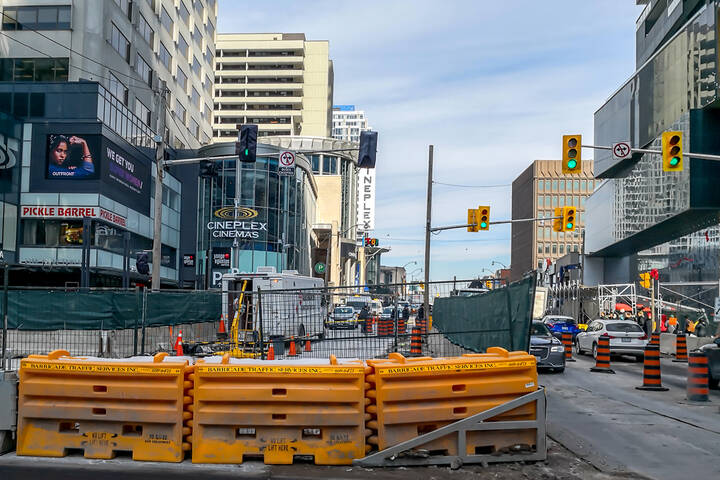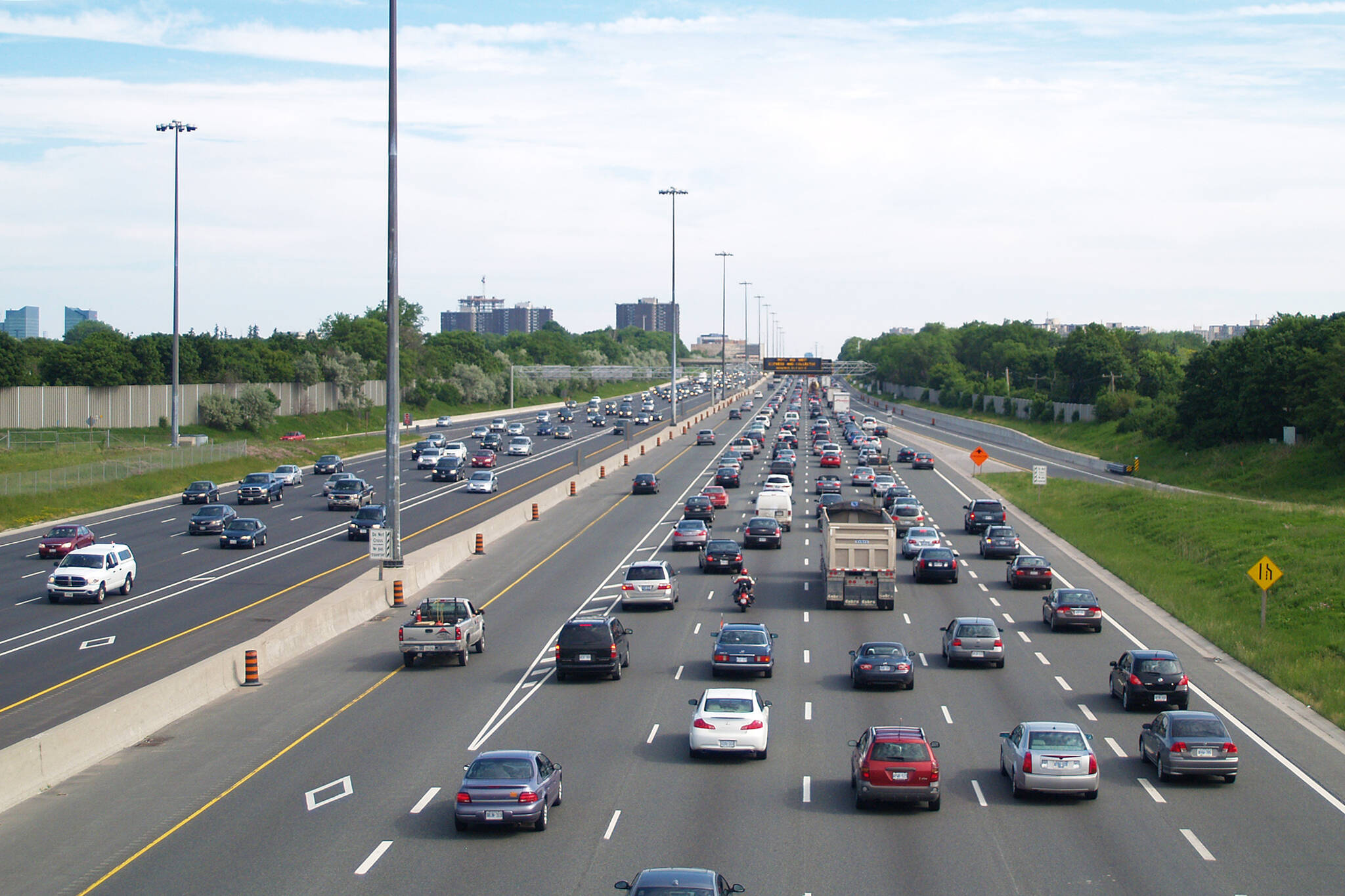
A Toronto highway is completely changing up the rules for its new HOV lanes
Anyone who's ever been stuck in traffic on a 400-series highway in and around Toronto has definitely wished at least once that they had a friend or coworker with them to use the HOV lane, the lefhand route that is reserved for high occupancy vehicles, and thus is usually far less congested.
Though we may all be familiar with the usual protocols associated with these special lanes, one Ontario highway just got new ones installed, and they look a lot different and come with a whole new set of rules.
The typical HOV lane is a single aisle marked by white diamond outlines on the road surface, as well as a thick striped buffer zone separating it from the rest of traffic.
The buffer zone turns into a dashed line at times to permit vehicles to cross in and out of the lane to enter and exit as needed.
But, the provincial government has decided to try out a new design for the recently-installed HOV lanes on Highway 400 going southbound to Toronto, between King Road and Major Mackenzie Drive in Vaughan.
The newly opened southbound HOV lanes on Highway 400 in Vaughan have a new design, including a transfer lane to help with merging 🚗
— Ontario Ministry of Transportation (@ONtransport) October 7, 2021
Learn how to use these new lanes by watching our HOV 101 video below 👇 pic.twitter.com/x0c4R6btCQ
Cars with more than one person inside — as well as taxis, airport limos, buses, motorcycles, emergency vehicles and anyone with a green license plate — will now on this section of the roadway need to use a dedicated HOV transfer lane, located between the normal fast lane and the actual HOV lane, to cut across.
This new passage allows drivers to adequately adjust their speed to merge into and out of the often fast-moving lane, rather than potentially pulling into it from a full stop amid a traffic jam or holding up other cars while trying to cut out into slow or stopped traffic to exit.
It also means that the HOV lane effectively takes up two lanes of traffic in some parts, rather than just the one — something that may further encourage people to carpool and reduce emissions, but may also be a little confusing.
I think too many people drive like maniacs on this hwy! I can’t stand driving through Vaughan for this reason! Whatever it takes to make that stretch safer… If it’s 6 lanes you say, so be it!
— Lp (@jenpratschner4) October 10, 2021
Residents will have to wait and see whether this new method ends up proving to be a helpful and safer way of doing things, or just more problematic for motorists.
So far, responses online seem to predict the latter, with people calling the concept an example of over-engineering and worrying it may cause even more aaccidents.
In the example you've provided... a car entering the buffer lane from the passing lane, must then quickly veer right while in the HOV lane?
— The Beaver (@BeaversAdvocate) October 8, 2021
This kind of manoever at high speeds changes the weight distribution of a car in forward motion... https://t.co/rtrEv8V4pF
The Ontario Ministry of Transportation has yet to reveal whether these types of lanes will be rolled out on other major highways in the future, though they have provided a detailed guide for how to properly use both the old and new forms of HOV lanes.
For both, the penalty for improper use is a $110 fine and three demerit points.
Latest Videos
Latest Videos
Join the conversation Load comments
